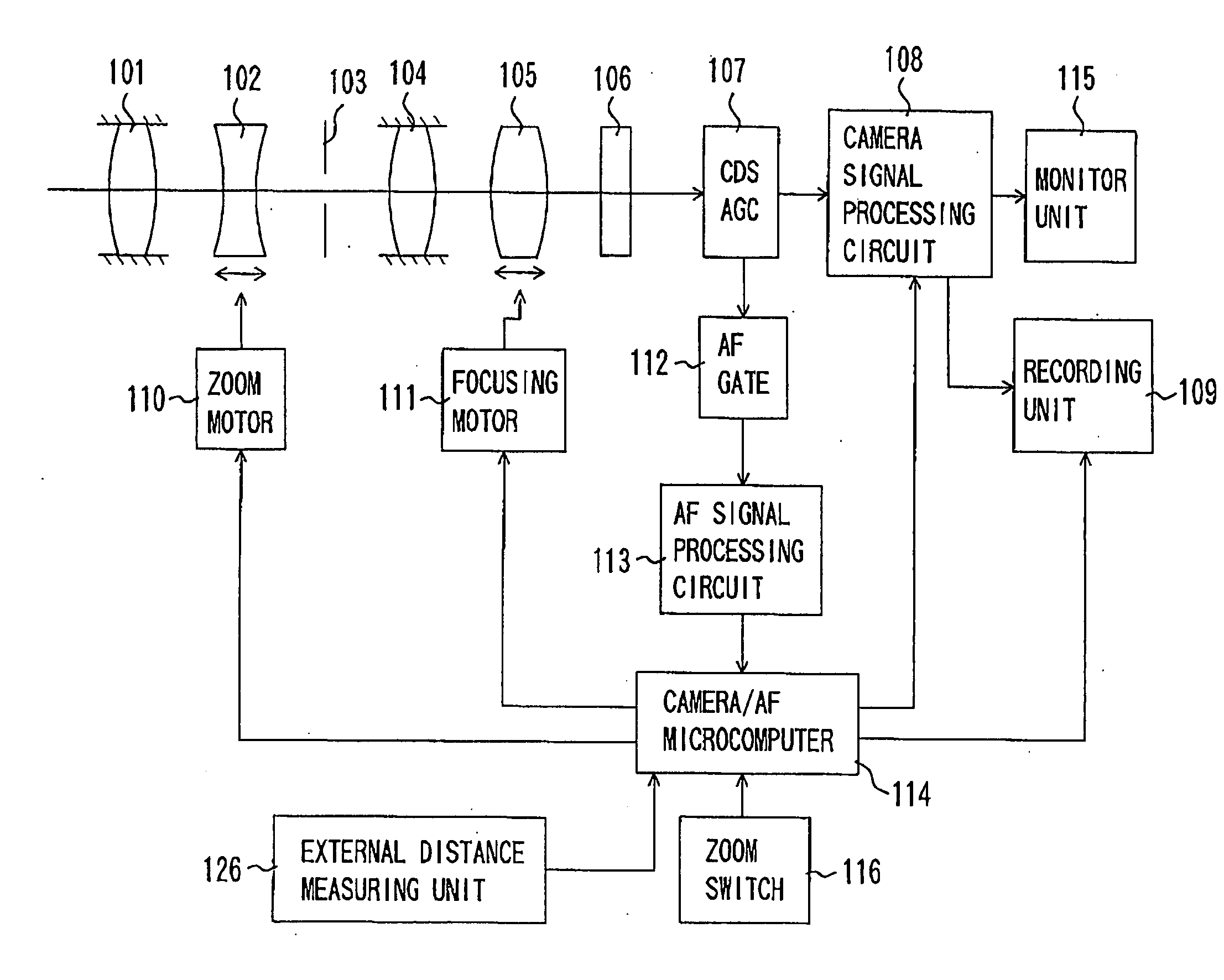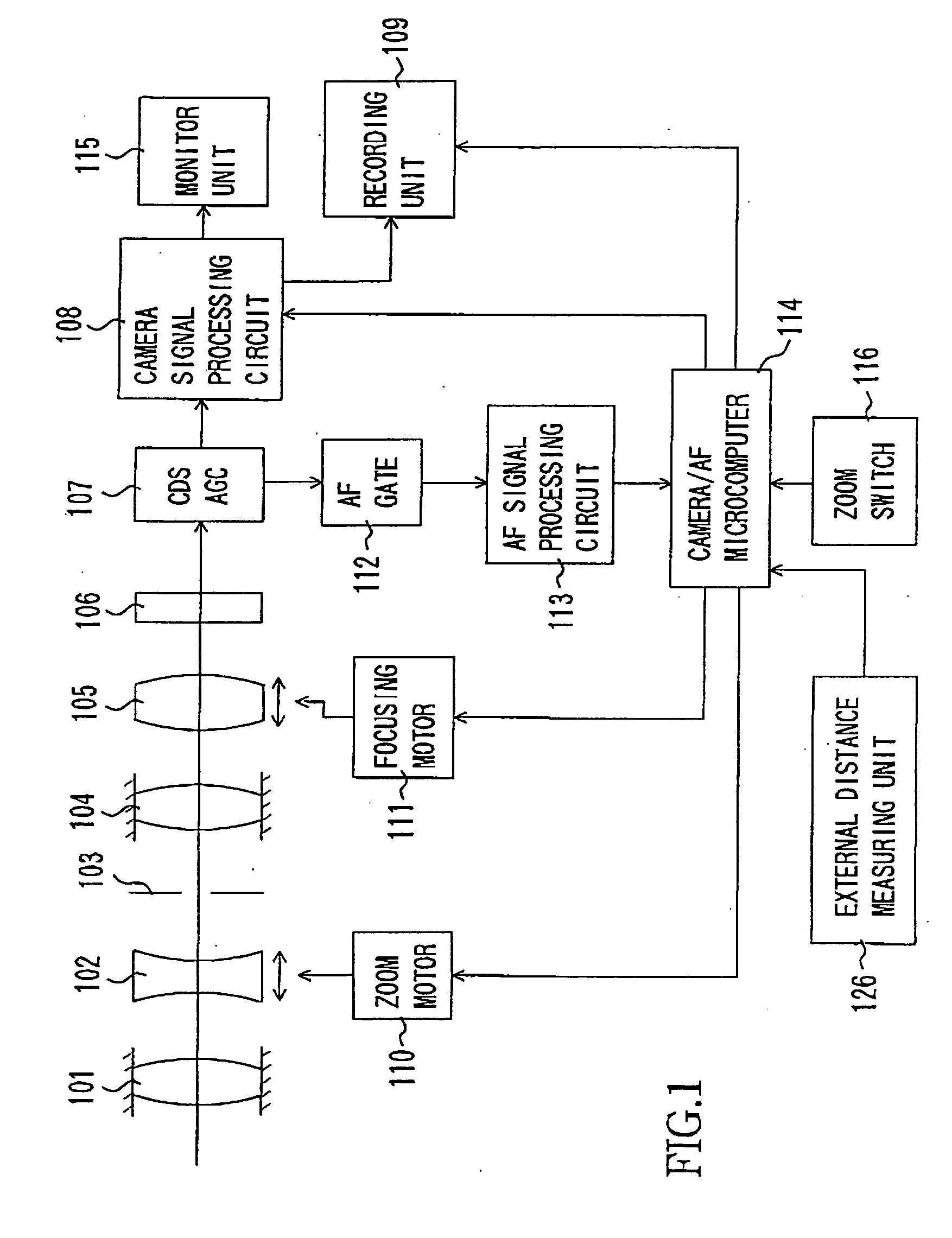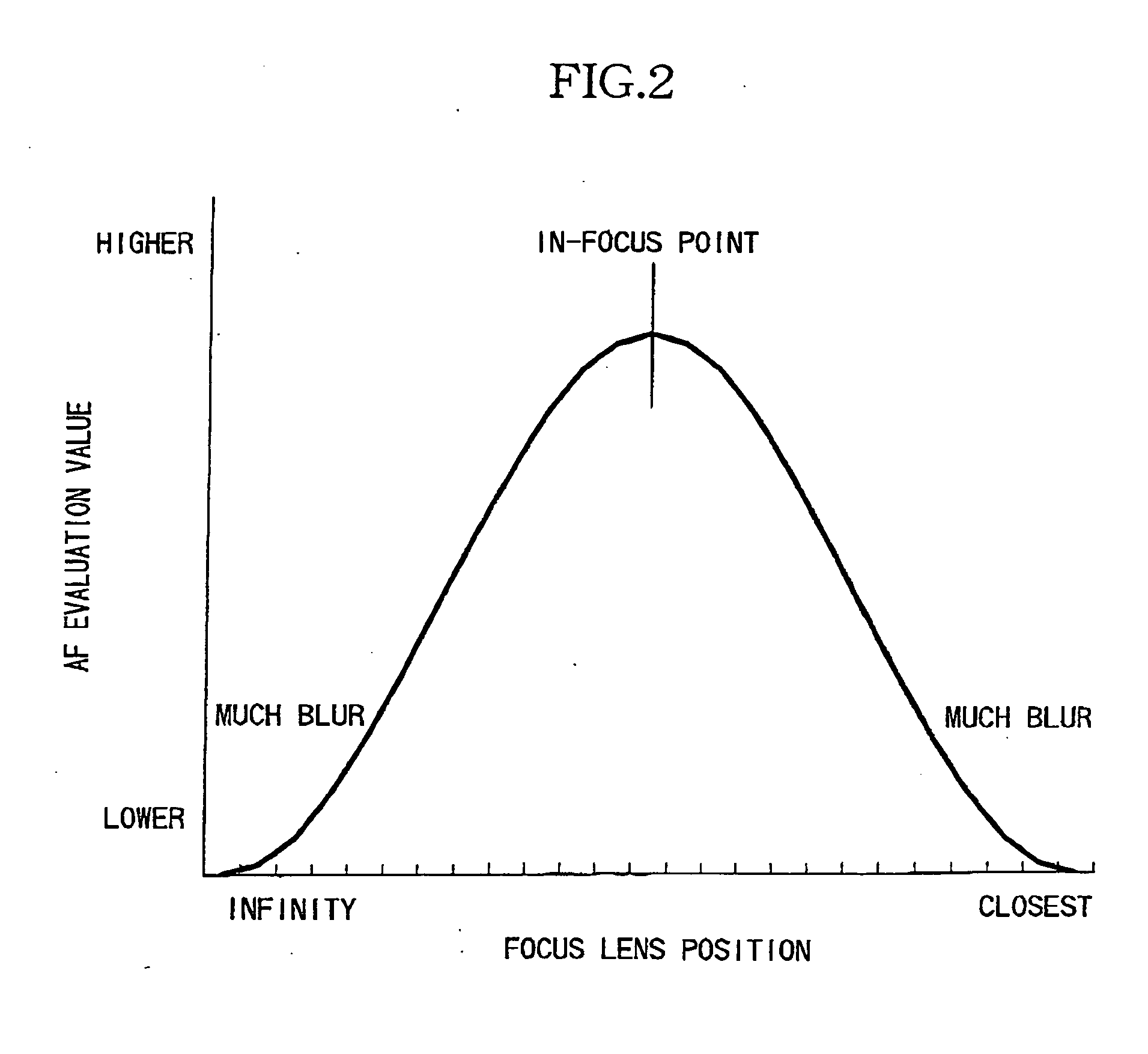Image-taking apparatus
- Summary
- Abstract
- Description
- Claims
- Application Information
AI Technical Summary
Benefits of technology
Problems solved by technology
Method used
Image
Examples
embodiment 1
[0048] (Embodiment 1)
[0049]FIG. 1 shows the structure of a video camera (an image-taking apparatus) which is Embodiment 1 of the present invention. While description is made for a video camera integral with an image-taking lens, the present invention is applicable to a video camera on which an image-taking lens is mountable. In this case, a control signal produced by a camera / AF microcomputer, later described, is communicated to a microcomputer in the image-taking lens such that the camera / AF microcomputer controls the drive of a focus lens unit via the lens microcomputer. In addition, while the video camera is described in Embodiment 1, the present invention is applicable to various types of image-taking apparatuses such as a digital still camera. This applies to Embodiment 2, later described.
[0050] In FIG. 1, reference numeral 101 denotes a first fixed lens unit, reference numeral 102 denotes a lens unit (hereinafter referred to as a zoom lens unit) which provides variable magnif...
embodiment 2
[0156] (Embodiment 2)
[0157]FIG. 8 is a block diagram showing the system structure of a video camera (an image-taking apparatus) which is Embodiment 2 of the present invention. In Embodiment 2, the components identical to those in Embodiment 1 described above are designated with the same reference numerals as those in Embodiment 1, and description thereof is omitted.
[0158] While Embodiment 1 has been described for the case where the external distance measuring unit 126 is used as the second detecting means, Embodiment 2 is described for the case where an AF circuit which performs TTL (Through The Lens) phase difference detection is used.
[0159] In FIG. 8, reference numeral 101 denotes a first fixed lens unit, reference numeral 102 denotes a lens unit (hereinafter referred to as a zoom lens unit) which provides variable magnification, and reference numeral 105 denotes a lens unit (hereinafter referred to as a focus lens unit) which has both of a focus adjusting function and a so-call...
PUM
 Login to View More
Login to View More Abstract
Description
Claims
Application Information
 Login to View More
Login to View More - R&D
- Intellectual Property
- Life Sciences
- Materials
- Tech Scout
- Unparalleled Data Quality
- Higher Quality Content
- 60% Fewer Hallucinations
Browse by: Latest US Patents, China's latest patents, Technical Efficacy Thesaurus, Application Domain, Technology Topic, Popular Technical Reports.
© 2025 PatSnap. All rights reserved.Legal|Privacy policy|Modern Slavery Act Transparency Statement|Sitemap|About US| Contact US: help@patsnap.com



